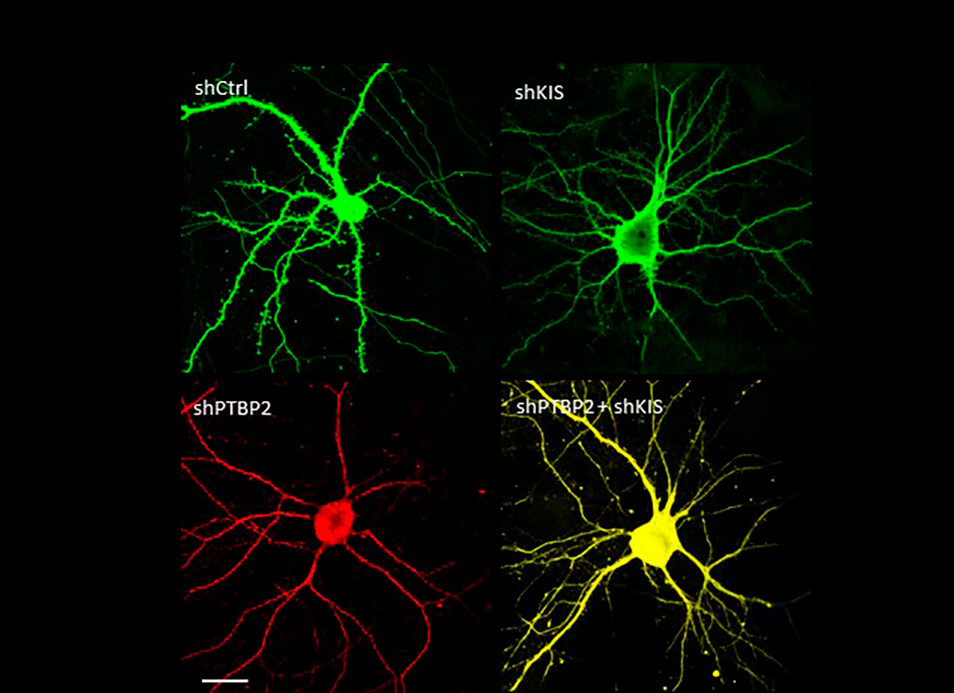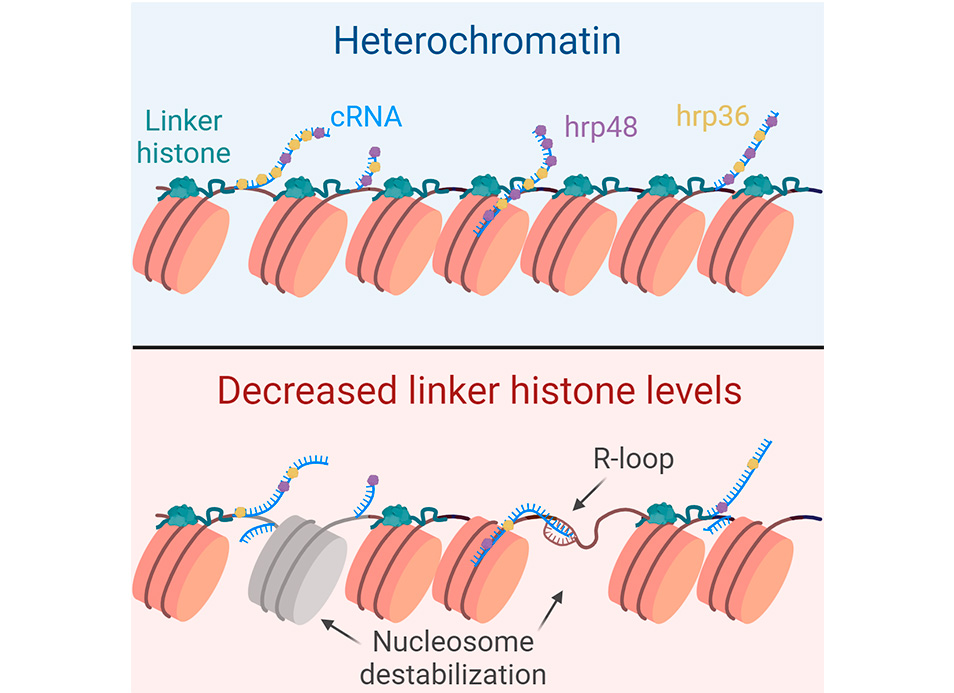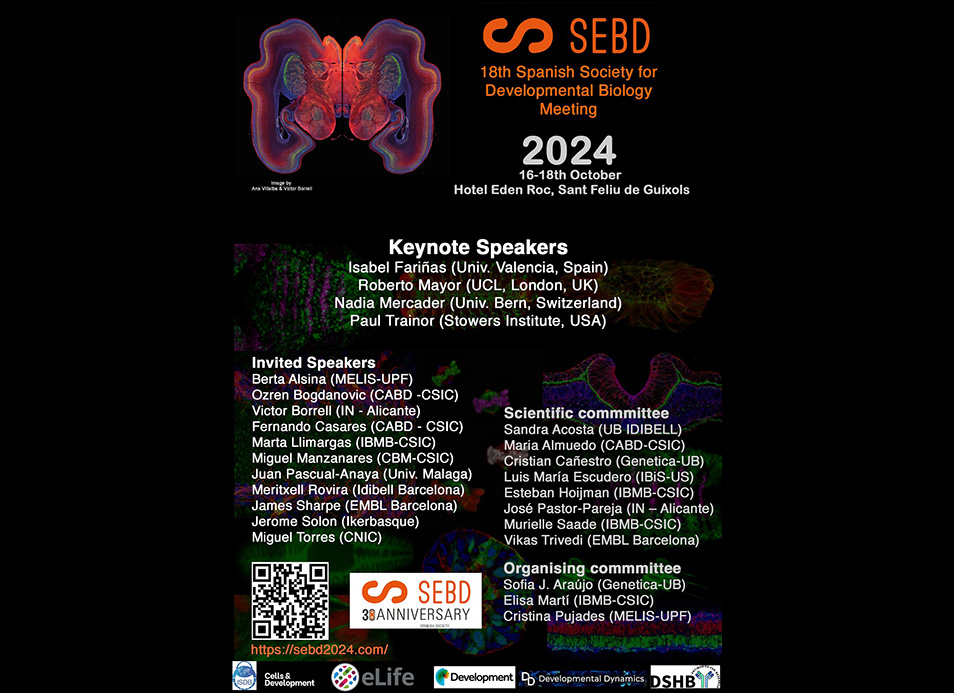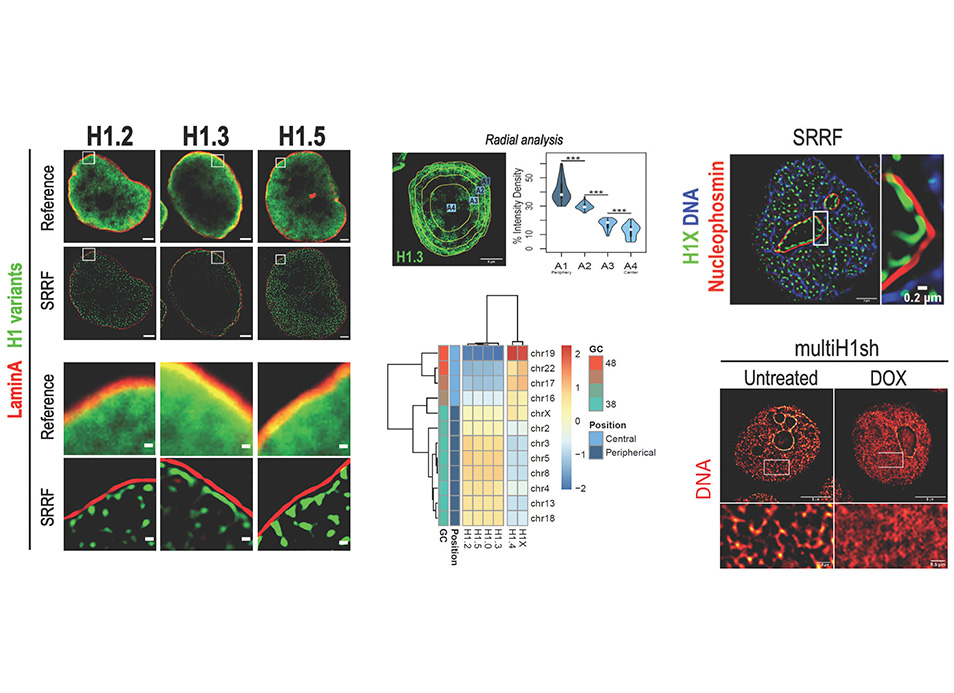cRNAs, a heterogeneous group of RNAs that copurify with chromatin, are abundant in heterochromatic transcripts…
KIS counteracts PTBP2 and regulates alternative exon usage in neurons
This study provides important new insights into the regulation of alternative splicing in neurons by the kinase KIS. The results obtained demonstrates how KIS-mediated phosphorylation of the splicing regulator PTB2 controls exon usage during neuronal differentiation.
Abstract
Alternative RNA splicing is an essential and dynamic process in neuronal differentiation and synapse maturation, and dysregulation of this process has been associated with neurodegenerative diseases. Recent studies have revealed the importance of RNA-binding proteins in the regulation of neuronal splicing programs. However, the molecular mechanisms involved in the control of these splicing regulators are still unclear. Here, we show that KIS, a kinase upregulated in the developmental brain, imposes a genome-wide alteration in exon usage during neuronal differentiation in mice. KIS contains a protein-recognition domain common to spliceosomal components and phosphorylates PTBP2, counteracting the role of this splicing factor in exon exclusion. At the molecular level, phosphorylation of unstructured domains within PTBP2 causes its dissociation from two co-regulators, Matrin3 and hnRNPM, and hinders the RNA-binding capability of the complex.Furthermore, KIS and PTBP2 display strong and opposing functional interactions in synaptic spine emergence and maturation. Taken together, our data uncover a post-translational control of splicing regulators that link transcriptional and alternative exon usage programs in neuronal development.
Reference:
Moreno-Aguilera M, Neher AM, Mendoza MB, Dodel M, Mardakheh FK, Ortiz R, Gallego C. (2024). KIS counteracts PTBP2 and regulates alternative exon usage in neurons. eLife. Apr 10;13:e96048. doi: 10.7554/eLife.96048




